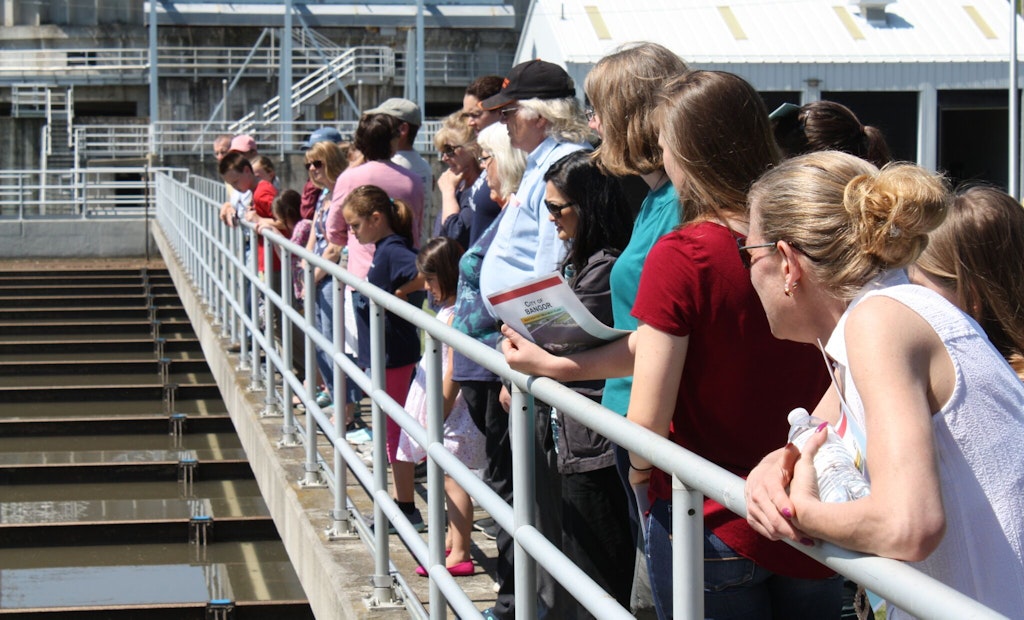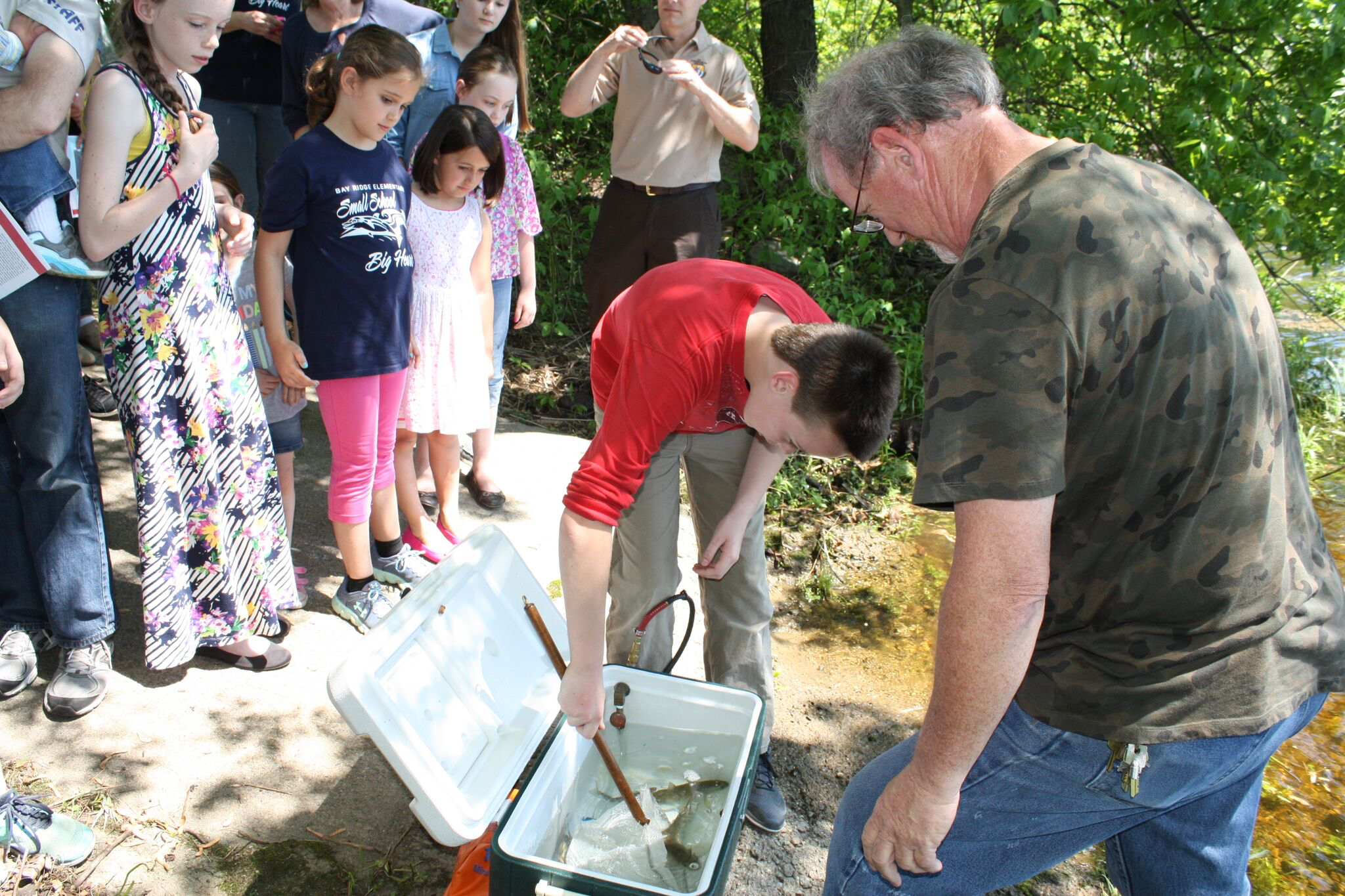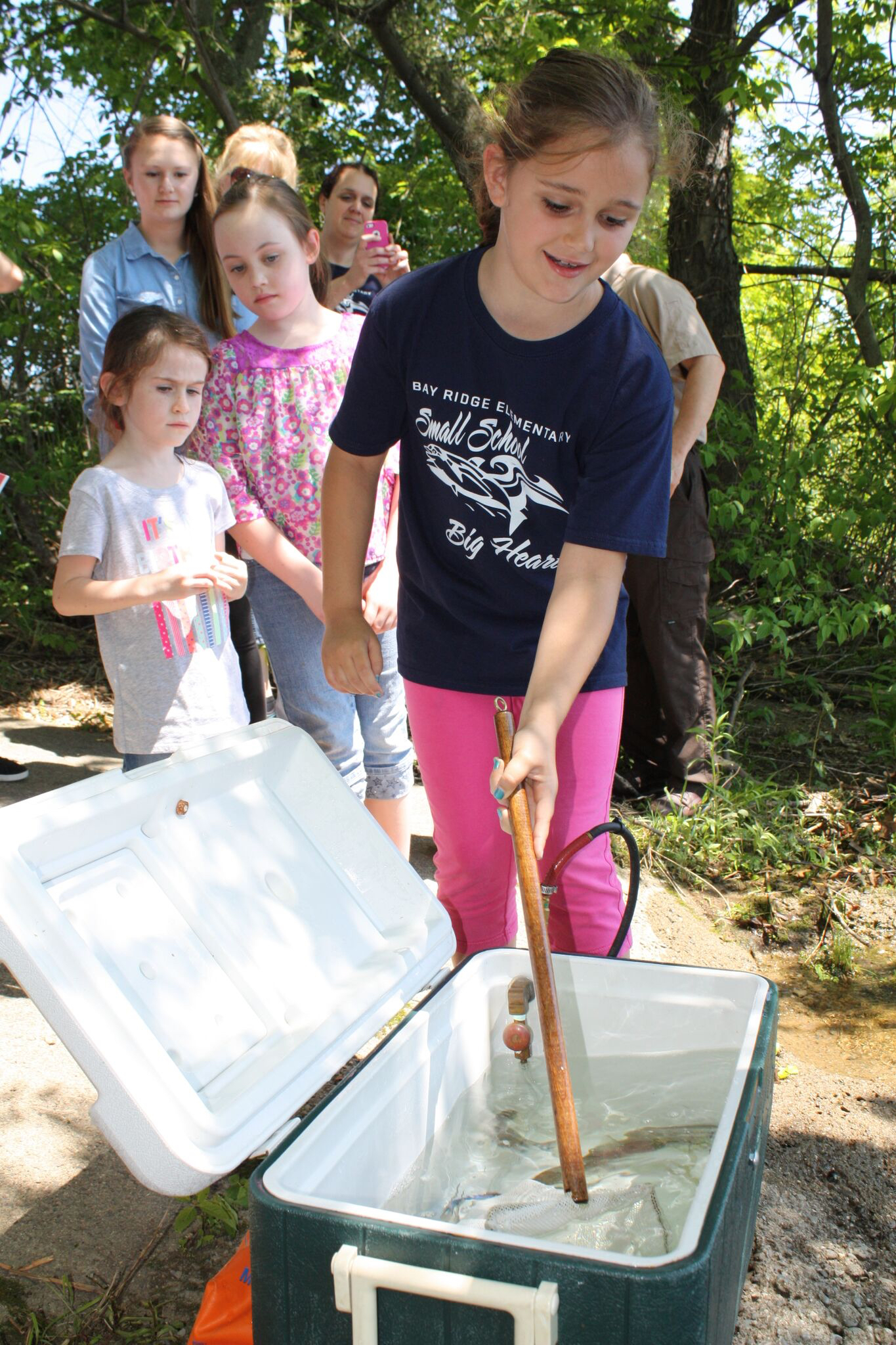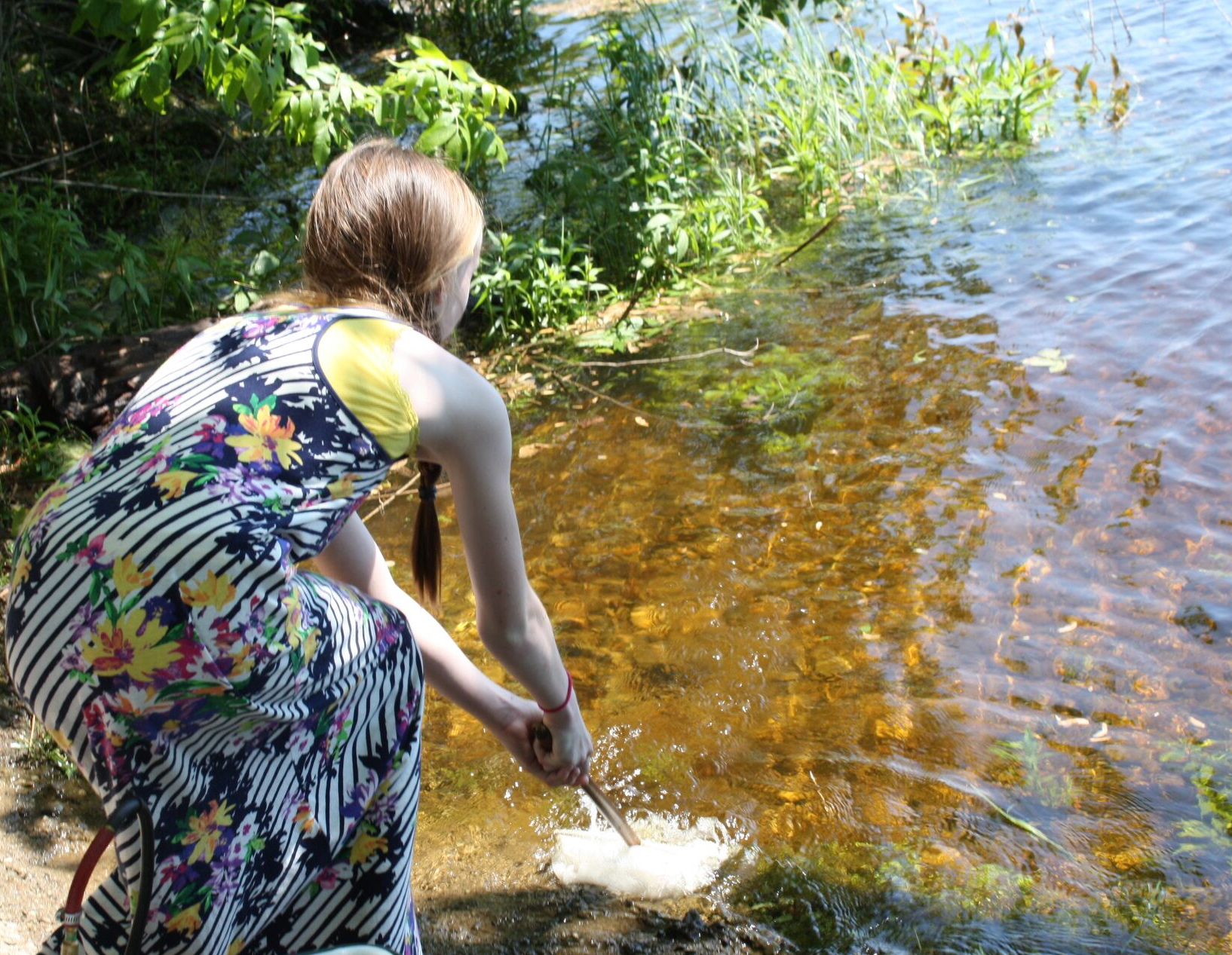Bangor, Maine, is experiencing a spike of tour requests and public interest due to its salmon release program.
Since 2007, the city has worked with Fish and Wildlife Services to raise salmon in effluent from the wastewater treatment plant. Groups are then invited to the plant for the release, exposing them to plant services in the process.
“We try to make as big of an event as possible out of it, and salmon are just the attraction that gets them through the door,” says Amanda Smith, industrial pretreatment and safety coordinator. “We’re doing this as a way of showing the quality of our effluent, and by the time they see how clean that water is, every single time, they’ve been more than impressed.”
The event also highlights Class A Biosolids compost that the plant produces with help from Casella Organics, and this year kids could actually plant flowers in the compost, thanks to donations from Home Depot.
“We start them out at the dirty end of the plant, where they’re holding their noses, and don’t know if they want to go any farther, and by the time that they get through our tour, and come to the end of the secondary treatment, I’ve never had anyone insinuate they may be doubtful about touching our biosolids, or letting their kids dip a hand in that water to grab the fish,” Smith says.
Representatives from Fish and Wildlife, as well as Casella Organics, are usually on hand to talk about salmon life cycles and byproduct composting.
Benefits of increased visibility
“We select a different group every year to join us, to release the salmon, and we take that opportunity to give them a tour, and talk to them about what we do,” Smith says. “We’ve actually gotten very busy, and overwhelmed with requests for tours, but it’s really worked out.”
High schools and universities in the area regularly schedule tours now, including University of Maine engineering students, and Hudson University environmental science classes. The utility has even gotten some potential recruits from those groups.
“Especially with the age of the workforce in wastewater, it has brought a lot of positive attention that this is a huge career opportunity,” Smith says. “I frequently hear back from them after graduating, looking for opportunities for internships or employment.”
It’s not the first time a treatment plant has raised fish on effluent. In fact, Bangor’s laboratory manager, Thomas Hambrock, originally conceived the idea for their program after seeing another plant with effluent-raised fish. The idea translated over to the Bangor area very well.
“Maine people have a long-standing attachment to Atlantic Salmon,” Smith says. “It’s something that catches the attention of our customers and of the community around here. Everyone’s excited about Atlantic salmon.”
After the logging era and industrial revolution, pollution of the Penobscot River pushed salmon out of the area. By the 1950s, there was no quantifiable salmon presence. Populations began returning in the early ’70s, aided further by a large restoration project, which included the removal of several dams on the river in 2010. Now, the river is clean enough for salmon to flourish.
Anyone can do it
Fish are introduced into the effluent in August, and are released in the spring, as soon as the river is warm enough, usually late May.
“We raise them throughout the year, we have them right in our front vestibule, so our customers can come in, and we do have customers that specifically come here to look at the fish,” Smith says. “The only cost associated with it is we bought a decent-size tank, and we have to maintain that throughout the year.”
The tank is 180 gallons, holding eight Atlantic salmon, and requires about a half-hour of maintenance a day. Beyond that, juvenile fish are provided by Maine Fish and Wildlife, and the return in terms of public engagement is immeasurable. “I would encourage any plant to do something like this,” Smith says. “It’s such a good testament to what your operators do on a daily basis, and it gives the community some insight into what is typically a pretty thankless job.”









